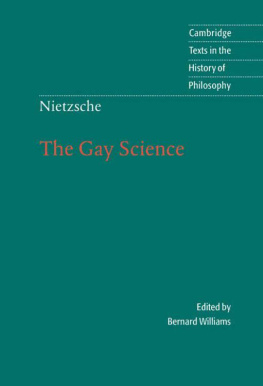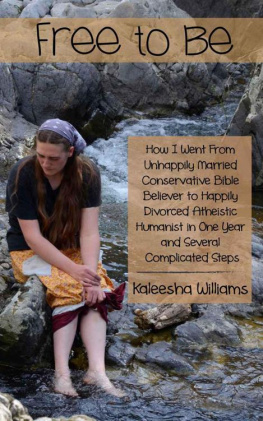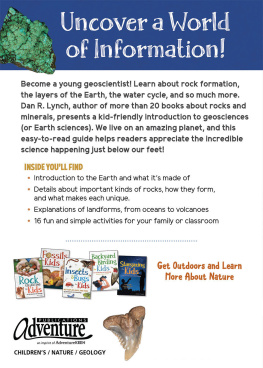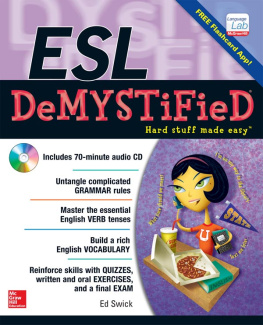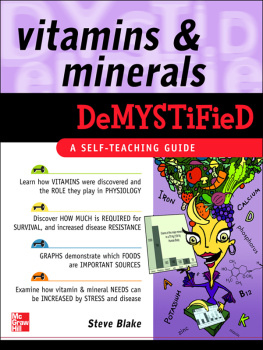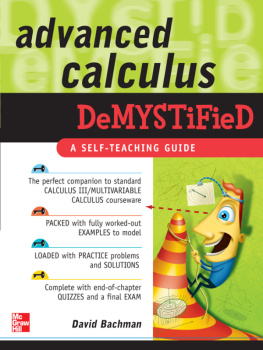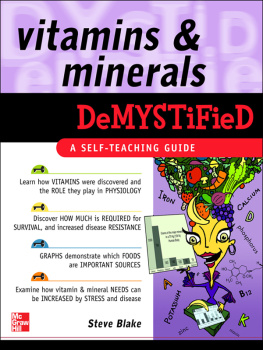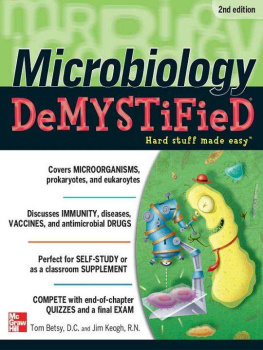Earth Science Demystified
Demystified Series
Advanced Statistics Demystified
Algebra Demystified
Anatomy Demystified
Astronomy Demystified
Biology Demystified
Business Statistics Demystified
Calculus Demystified
Chemistry Demystified
College Algebra Demystified
Earth Science Demystified
Everyday Math Demystified
Geometry Demystified
Physics Demystified
Physiology Demystified
Pre-Algebra Demystified
Project Management Demystified
Statistics Demystified
Trigonometry Demystified
Earth Science Demystified
LINDA WILLIAMS

This book is dedicated to my father, Douglas Williams, who loved nature and was an even bigger rock hound than I am. He spent his life pointing out the beauty and wonders of the natural world and honored God through reverence and care of His work. Thank you, Dad. I love you and will never forget.

Copyright 2004 by The McGraw-Hill Companies, Inc. All rights reserved. Except as permitted under the United States Copyright Act of 1976, no part of this publication may be reproduced or distributed in any form or by any means, or stored in a database or retrieval system, without the prior written permission of the publisher.
ISBN: 978-0-07-147109-1
MHID: 0-07-147109-X
The material in this eBook also appears in the print version of this title: ISBN: 978-0-07-143499-7, MHID: 0-07-143499-2.
All trademarks are trademarks of their respective owners. Rather than put a trademark symbol after every occurrence of a trademarked name, we use names in an editorial fashion only, and to the benefit of the trademark owner, with no intention of infringement of the trademark. Where such designations appear in this book, they have been printed with initial caps.
McGraw-Hill eBooks are available at special quantity discounts to use as premiums and sales promotions, or for use in corporate training programs. To contact a representative please e-mail us at bulksales@mcgraw-hill.com.
Information contained in this book has been obtained by The McGraw-Hill Companies Inc. (McGraw-Hill) from sources believed to be reliable. However, neither McGraw-Hill nor its authors guarantee the accuracy or completeness of any information published herein and neither McGraw-Hill nor its authors shall be responsible for any errors, omissions, or damages arising out of use of this information. This work is published with the understanding that McGraw-Hill and its authors are supplying information but are not attempting to render engineering or other professional services. If such services are required, the assistance of an appropriate professional should be sought. |
TERMS OF USE
This is a copyrighted work and The McGraw-Hill Companies, Inc. (McGraw-Hill) and its licensors reserve all rights in and to the work. Use of this work is subject to these terms. Except as permitted under the Copyright Act of 1976 and the right to store and retrieve one copy of the work, you may not decompile, disassemble, reverse engineer, reproduce, modify, create derivative works based upon, transmit, distribute, disseminate, sell, publish or sublicense the work or any part of it without McGraw-Hills prior consent. You may use the work for your own noncommercial and personal use; any other use of the work is strictly prohibited. Your right to use the work may be terminated if you fail to comply with these terms.
THE WORK IS PROVIDED AS IS. McGRAW-HILL AND ITS LICENSORS MAKE NO GUARANTEES OR WARRANTIES AS TO THE ACCURACY, ADEQUACY OR COMPLETENESS OF OR RESULTS TO BE OBTAINED FROM USING THE WORK, INCLUDING ANY INFORMATION THAT CAN BE ACCESSED THROUGH THE WORK VIA HYPERLINK OR OTHERWISE, AND EXPRESSLY DISCLAIM ANY WARRANTY, EXPRESS OR IMPLIED, INCLUDING BUT NOT LIMITED TO IMPLIED WARRANTIES OF MERCHANTABILITY OR FITNESS FOR A PARTICULAR PURPOSE. McGraw-Hill and its licensors do not warrant or guarantee that the functions contained in the work will meet your requirements or that its operation will be uninterrupted or error free. Neither McGraw-Hill nor its licensors shall be liable to you or anyone else for any inaccuracy, error or omission, regardless of cause, in the work or for any damages resulting therefrom. McGraw-Hill has no responsibility for the content of any information accessed through the work. Under no circumstances shall McGraw-Hill and/or its licensors be liable for any indirect, incidental, special, punitive, consequential or similar damages that result from the use of or inability to use the work, even if any of them has been advised of the possibility of such damages. This limitation of liability shall apply to any claim or cause whatsoever whether such claim or cause arises in contract, tort or otherwise.
CONTENTS
PREFACE
Earth Science is made up of many different areas of geological study. Since the Earth contains everything from clouds (meteorology) and oceans (marine biology) to fossils (paleontology) and earthquakes (geology/plate tectonics), there is a lot to choose from!
This book is for anyone with an interest in Earth Science who wants to learn more outside of a formal classroom setting. It can also be used by home-schooled students, tutored students, and those people wanting to change careers. The material is presented in an easy-to-follow way and can be best understood when read from beginning to end. However, if you just want to brush up on specific topics like minerals and gems or volcanoes, then those chapters can be reviewed individually as well.
You will notice through the course of this book that I have mentioned many milestone theories and accomplishments of geophysicists, oceanographers, seismologists, and ecologists to name a few. I have highlighted these knowledge leaps to give you an idea of how the questions and bright ideas of curious people have advanced humankind.
Science is all about curiosity and the desire to find out how something happens. Nobel Prize winners were once students who daydreamed about new ways of doing things. They knew answers had to be there and they were stubborn enough to dig for them. The Nobel Prize for Science (actors have Oscar and scientists have Nobel) has been awarded over 470 times since 1901.
In 1863, Alfred Nobel experienced a tragic loss in an experiment with nitroglycerine that destroyed two wings of the family mansion and killed his younger brother and four others. Nobel had discovered the most powerful weapon of that time, dynamite.
By the end of his life, Nobel had 355 patents for various inventions. After his death in 1896, Nobels will described the establishment of a foundation to create five prizes of equal value for those who, in the previous year, have contributed best toward the benefits for humankind, in the areas of Earth Science, Physics, Physiology/Medicine, Literature and Peace. Nobel wanted to recognize the heroes of science and encourage others in their quest for knowledge.
Earth Science also has individual prizes and awards specific to geology. The Penrose Medal (pure geology), Crawford Prize (nonlinear science, e.g., dynamics and computations/simulations), and the Day Medal (geophysics and geochemistry) are all awarded in recognition of outstanding Earth Science research and advancements.
My hope is that in learning of the many simple ideas and observations that changed our understanding of the way the Earth functions, you too will be encouraged to let your own creative thoughts tackle ongoing Earth Science challenges.
Next page

